The world of sockets: how to charge gadgets in different countries of the world

Since the end of the 19th century, attempts to invent the best way to transfer electricity did not cease. As soon as the first craftsmen could light a light bulb, networks of wires covering buildings, streets, cities and countries began to envelop us from all sides, causing a lot of attendant problems.
Hanging wires spoil the appearance of the city and can be a serious danger. At home, you can not breathe with relief when there is a tangle of twisted wires hiding under the table. And the number of energy consumers is growing at an alarming rate.
')
Many have tried to rid the world of numerous high-voltage lines. There is no need to remind you of the experiences of Nikola Tesla, who in practice has demonstrated the possibility of wireless transmission of electricity from a generator to a consumer. Passed a century, and power lines and now here, as well as the socket, thirsting for plugs. Since the time of Tesla, all innovations in this field have found the road to the consumer with great difficulty.
Every traveler has experienced the inconvenience of wired power transmission. In many countries of the world, different standards of electrical plugs and sockets are used, which must be remembered when going on a long journey.
Why is the world so different

When talking about such banality as recharging electrical appliances, you can forget about globalization. This hamburger remains a hamburger everywhere, but the socket mutates. Even in the EU, you can find different electrical outlets. The problem is long-standing, it has no clear solution, and it forces tourists to replenish their luggage with a network adapter and a converter.
But the type of outlet is only half the problem. It is necessary to pay attention to the voltage in the electrical network of a particular country. It is better not to check what will happen if the device working from 100-127 V is plugged into the outlet from 220-240 V. Although the opposite situation is much more interesting to us. But even if you are sure that in the country where you are going, the standard 220 volts (50 hertz) is adopted, it’s too early to relax. Practice shows that, for example, in India, the voltage can jump from 100 to 300 volts.
The two most common voltage and frequency standards in the world are common: American - 100-127 Volt 60 Hertz and European - 220-240 Volt 50 Hertz. However, there are unique and transitional standards. And in some countries there are no standards at all.
There are several reasons for this situation.
First of all , the struggle of technologies at the beginning of the development of electricity left its mark. We are talking about the opposition of Thomas Edison and Nikola Tesla in the creation of DC and AC networks, respectively. Although we know that AC electrical power ultimately won out, the DC infrastructure created in the United States until the 1920s (and in Stockholm until the 1950s) has to be maintained and used up to now. .
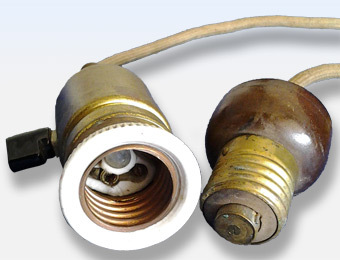
Secondly , many inventors offered their versions of optimal (in their opinion) outlets. For example, in 1904, the American inventor Harvey Hubbel received a patent for the first electrical socket. By design, it was a kind of adapter for electronic patron plug. The adapter was screwed into the cartridge instead of a light bulb, and some electrical device was connected to it.
German engineer Albert Buttner created the “Euro socket” known to us today in 1926. And the first outlet with grounding was created by Philip Labre in 1927. Chaos was also added by national companies that installed electrical networks and directly supplied their customers with electrical appliances, introducing various types of plug connectors (with complete disregard for similar foreign products).
Thirdly , the variety of outlet designs was influenced by features of manufacturing and availability of materials. In Great Britain, due to the shortage of raw materials (in particular, copper) in the years of the Second World War, they created a three-pin plug with a short copper fuse, which allowed part of the reserves of this metal to be used for military needs. This plug has spread throughout the British Empire, consolidating the tradition of using three-pin plugs in many countries in Asia and Africa.
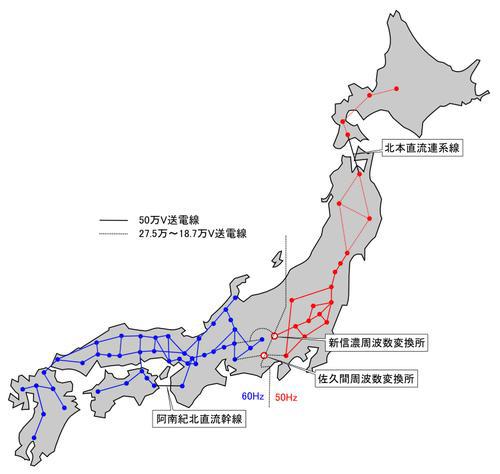
An illustrative example of Japan, in which today there are two energy systems - West and East. Europe in the XIX century came to the frequency of alternating current of 50 Hertz, and the United States - to 60 Hz. In 1895, German-made generators were purchased for Tokyo, and a year later American generators were installed in Osaka. Since then, the development of the Japanese energy system has taken two different paths.
Although all these reasons easily explain the absence of a single standard, let us not forget about such a simple thing as being in demand. At the beginning of the 20th century, an extremely small number of people traveled across borders with portable electric appliances. Travelers simply did not have to deal with the problem of the compatibility of plugs and sockets.
Rose Herbarium
In 1998, the US Department of Commerce assigned each type of outlets and plugs the designation in Latin letters. This classification is now accepted worldwide.
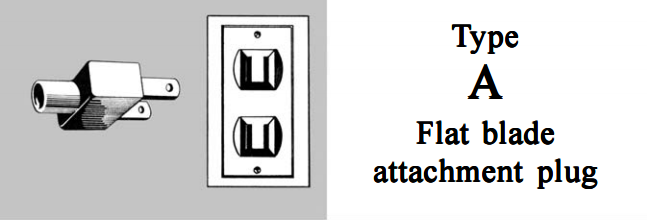
Used in North and Central America, in Japan . The plug consists of two flat parallel contacts, but in the Japanese version the contacts are of the same size, and in the US one is slightly wider than the other.
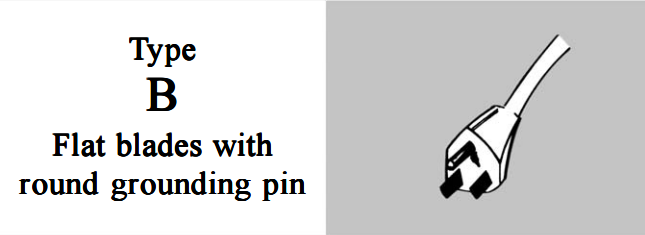
Used in North and Central America, in Japan . From type A differ in the presence of grounding contact. In America, type B is very popular, and in Japan it is much less common.

Used in all European countries, with the exception of the UK , Ireland , Cyprus and Malta . Type C is an obsolete, but still used option. In Europe, the types E, F, J, K and L are being used extensively.

Used in India , Nepal , Namibia , Sri Lanka , in selected areas of the UK and Ireland . Type D is an obsolete British-style plug that was used in the “homeland” until 1962.
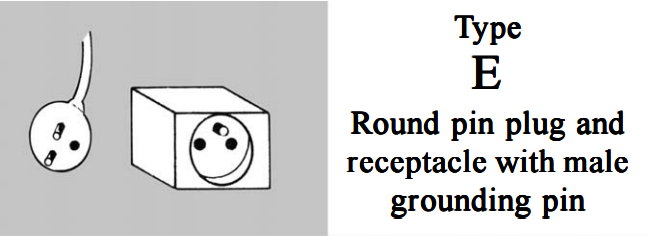
Used in France , Belgium , Poland , Slovakia , the Czech Republic , Tunisia and Morocco .

This type is also known as "Schuko". Used in Germany , Austria , the Netherlands , Sweden , Norway , Finland , Portugal , Spain , in the countries of Eastern Europe.
Before the collapse of the USSR, most outlets were designed for type C plugs, with pins smaller than the European type by 0.8 mm. In modern Russia (as across the CIS) type F sockets become the main type.
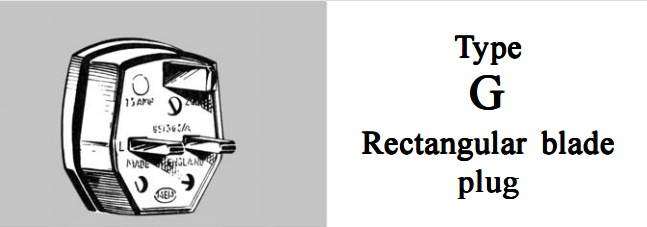
Used in the UK , Ireland , Malaysia , Singapore , Hong Kong , Cyprus and Malta .
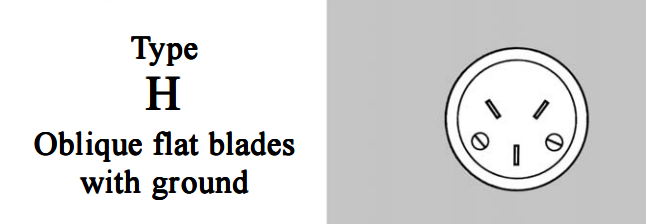
Israeli type.
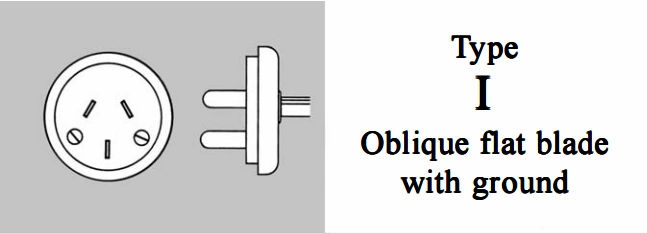
Used in Australia , China , New Zealand , Papua New Guinea and Argentina . They can be both with two, and with three (with grounding) plugs.

Used only in Switzerland and Liechtenstein .
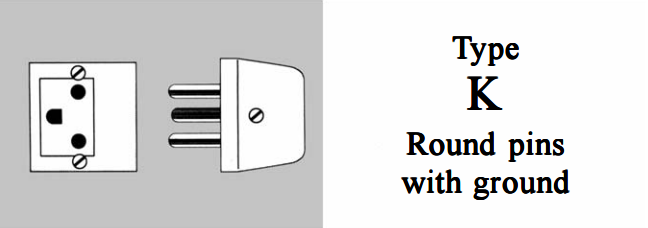
Used only in Denmark and Greenland .
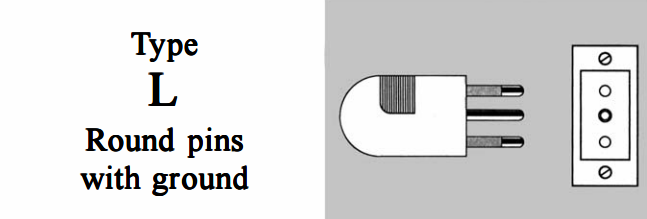
It is used only in Italy and very rarely in the countries of North Africa.
Its unique sockets - type M - are in South Africa and several other African countries. There are several other rare types, more details about which can be found at the link: http://www.worldstandards.eu/electricity/plugs-and-sockets/# .
Luggage traveler knowledge
In order not to learn the whole table, it is enough to use a visual map :

Just enter the name of the country and see the data we need by type of outlet, voltage and frequency of alternating current. Yes, in Thailand here is such a whistle: there are several incompatible (or partially compatible) types in the socket at once.

On the " Map " tab, the distribution is represented visually.
However, even this card will not always be able to help you. For example, in Brazil there is no national standard for mains voltage. Traveling in Brazil, you can meet the mains as a voltage of 127 volts and 220 volts. In the Maldives, a similar situation.
Fortunately, now most power adapters and chargers are made with the expectation of working on the network with any standard voltage, from 100 to 240 volts. Most of the problems can be solved using universal adapters and universal power adapters, the purchase of which should be made in advance.

But do not forget that there are enough places in the world where civilization slips around — universal adapters are often not suitable for special outlets in African countries.
Can we hope to solve the problem of outlets?
The first attempts to standardize the handling of electricity were made in the early 1930s. The international standard for the universal plug was created in the 1970s, but there are hundreds of millions of power outlets in the world, which would have resulted in enormous financial costs. Steps to unify standards are taken to this day, but it is difficult to predict when this process will be completed.
Most likely, in the future, the solution will be achieved through a universal USB-connector or the ubiquitous wireless charging.
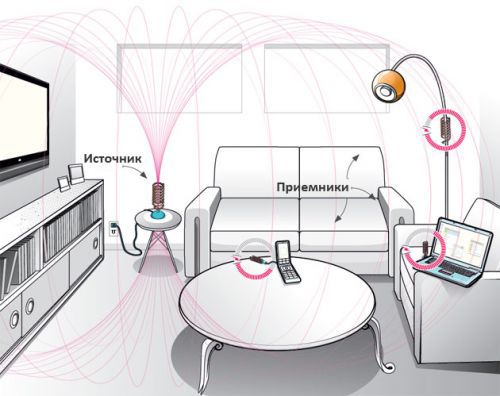
WiTricity (abbreviated from Wireless Electricity) is a wireless power transmission technology developed by the same American company.
Source: https://habr.com/ru/post/367823/
All Articles